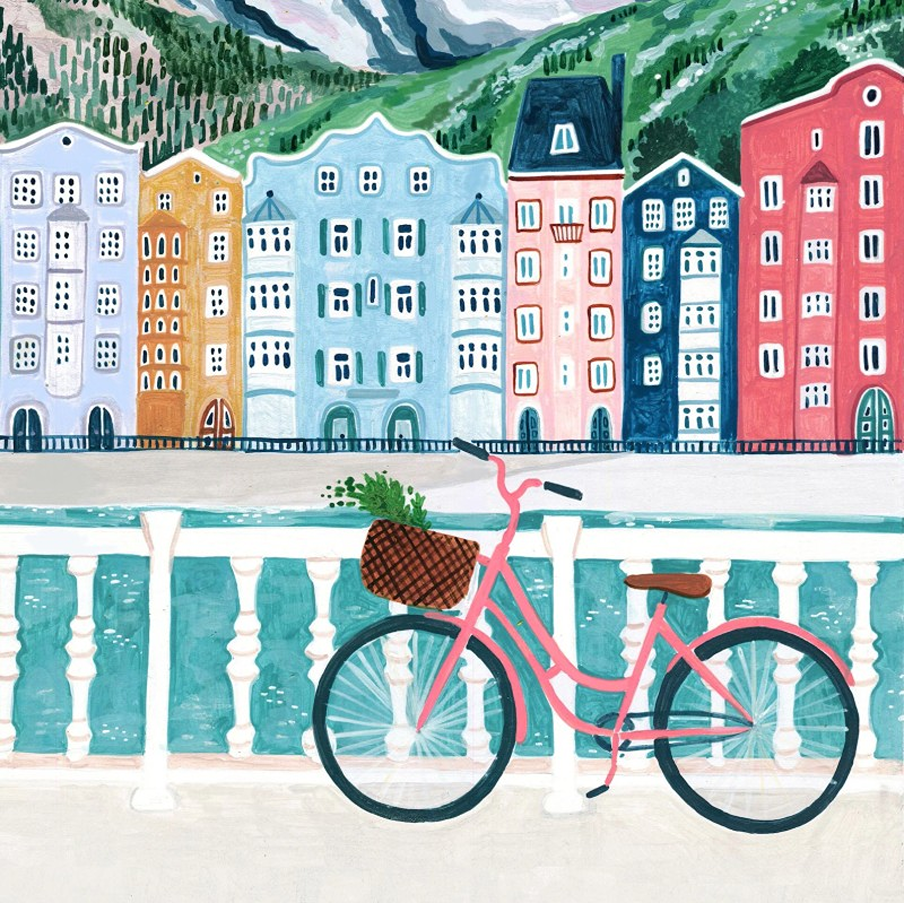Designing Bicycle-Friendly Towns and Cities

In England, you’re lucky if you get a little bit of coloured pavement to cycle on that suddenly disappears. But in Europe and the USA, cycle paths are everywhere, people can cycle from town to town, and many places have most people cycling to work. Read more on the benefits of bicycing.
Don’t do what one ‘green council’ did, and remove a ‘living wall’ that was home to birds, in order to build a cycle path. Bird homes are more important than cycle paths.
Cycling Rental Schemes

Beryl Hire offers rentable cargo bikes nationwide, along with e-bikes, e-scooters and manual brakes. The latter have adjustable saddles (from 5ft to over 6ft) and brake lights that come on when you start pedalling – and remain on for 2 minutes until you stop).
This company operates in many cities including Norwich (cycling-friendly due to being flat and dry!) Sustrans has free downloadable guides on its website for town planners, including how to design safe cycling in cities.
Tips for Cycling-Friendly Towns and Cities
Cycling is not just about providing cycle lanes. It’s about providing secure parking, showers and changing rooms (for commuters), and especially so in England, due to rainy days.
It’s also about ensuring that bikes (esp. folding bikes) are allowed on public transport, and that councils and schools offer bike safety info, for the road.
The City Fix reports that over 40,000 cyclists die worldwide in road accidents, which is why it’s so important for cities to follow their steps to safer cycling cities:
- Build bike lanes in car-free zones. This is where England goes wrong. We have a few coloured bike lanes right next door to thundering lorries and buses. Abroad, bi-directional bike lanes (not safe next to cars) are built for just bikes.
- Create bicycle boulevards. These give bikes priority over cars (low speed limits, pavement markings). This has happened in Portland, which has 70 miles of them).
- Use pop-up temporary bike lanes. Protect streets with cars, with dedicated space, not just ‘a different colour path’ with a cycle lane sign). Ideally with a buffer zone, for two cyclists to ride side-by-side.
- Heavy-duty physical segregation. If you’re riding your bike next to a car, a quick swerve can knock you off. Bumpers, bollards, barriers are made from heavy-duty plastic or flexible rubber, to avoid steel or concrete, which could injure.
Successful Bike Communities Worldwide

People in The Netherlands enjoy over 400km of bike lanes (with bike-friendly bridges, parking hubs and even dedicated traffic lights).
Building the Cycling City is a birthday book for your town planner, by an American couple who lived and studied public transport in The Netherlands for years. Learn how to create affordable planning, so most people want to ride bikes. It profiles five Dutch cities and interviews the experts.
Copenhagen is another very bike-friendly city. It has elevated bike highways and interconnected cycle paths, so you can cycle from town to town, without meeting road traffic. The city even clears snow from bike lanes (before roads), showing how dedicated it is, to people who ride bikes.
Both The Netherlands and Denmark have a ‘cargo bike’ culture where parents use them to go shopping, placing children in the back. In Copenhagen, the main street of Strøget is totally car-free and most people get around by bike.
Denmark has even created a network of cycle super-highways, which offers safe routes for distances over 5km.
Portland is a green city in the US state of Oregon. It has Trimet (the best public transit system on earth, with one ticket letting people ride the bus, train and tram – all bicycle-friendly).
The planning is so good, that residents can easily cycle out to enjoy nature, in the nearby Pacific Northwest.






